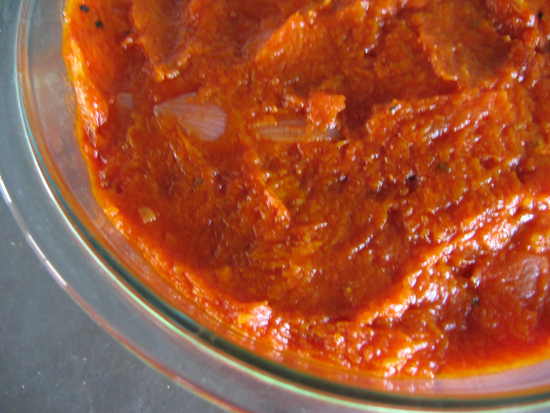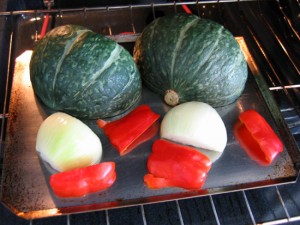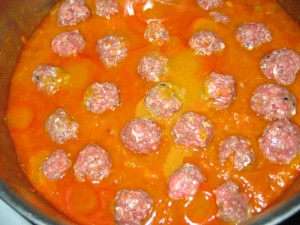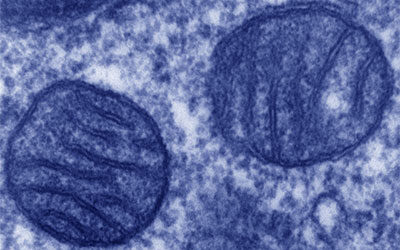
In the 12/20/07 Planet Thrive “Wise Woman Ways” column featuring dietary approaches to preventing and healing from radiation damage, herbalist Susun Weed shares: “Japanese researchers found that diets high in carotenes significantly reduced DNA damage in humans exposed to radiation. Supplements of beta-carotene (or of vitamins C or E) did not show this effect. Eating lots of orange and dark green foods (sweet potatoes, winter squash, beets, carrots, kale, collards, chard, and spinach, for example) can protect you from radiation-induced cancers.”
 In light of the current potential risk of radiation stemming from the March 11 earthquake and tsunami in Japan that caused several nuclear power plant explosions, I wanted to share this recipe for a delicious tomato pasta sauce that makes use of two beta-carotene-rich vegetables – carrot and winter squash. You can use butternut, kabocha (also known as Japanese pumpkin), acorn or any other winter squash.
In light of the current potential risk of radiation stemming from the March 11 earthquake and tsunami in Japan that caused several nuclear power plant explosions, I wanted to share this recipe for a delicious tomato pasta sauce that makes use of two beta-carotene-rich vegetables – carrot and winter squash. You can use butternut, kabocha (also known as Japanese pumpkin), acorn or any other winter squash.
Winter squash are a great form of dietary fiber, and are packed with vitamins – A, B1, B3, B5, B6, and C – as well as potassium, manganese, folate, omega 3 fatty acids, copper, tryptophan, iron and beta carotene. Supposedly, the darker the skin, the higher the beta carotene content.
So far, I’ve experimented with kabocha and butternut squash sauces. They both came out absolutely delicious. My most recent roasted butternut squash pasta sauce may be the best tomato sauce I’ve ever tasted in my life! – just the right balance of sweet and spicy. Knowing it is helping protect me from radiation damage gives me ample excuse to indulge in the coming weeks.
 I do have a history of rockin’ the house with a spanking delicious pasta sauce: While staying in Rome with some Italian friends back in ’91, I begged them to teach me how to make a tomato sauce in true Italian style. I splurged and bought all the ingredients in preparation. Two nights in a row, my hosts came home too late from work to guide me, and I was worried all my tomatoes would go bad. So I took a stab at it myself with only sketchy instructions. They had said to add sugar, but I had no idea how much. After I made a huge stockpot of the sauce, it tasted way too sweet to me. I was embarrassed to share it, and put it in the refrigerator, hoping it would mellow overnight. The next night a whole bunch of their friends came over for a pasta dinner…and all of the Italians were raving about my sauce. I couldn’t believe it – the irony. What better compliment than to have Italians asking an as-of-yet unworldly and unexperienced-in-the-kitchen American chick for a tomato sauce recipe! While the success of that first attempt at sauce-making was more a result of luck than skill, I like to think that this week’s sauce is a culmination of my many years as a hopeless foodie, who’s willing to put in the extra time to roast a squash or two to get that full flavor.
I do have a history of rockin’ the house with a spanking delicious pasta sauce: While staying in Rome with some Italian friends back in ’91, I begged them to teach me how to make a tomato sauce in true Italian style. I splurged and bought all the ingredients in preparation. Two nights in a row, my hosts came home too late from work to guide me, and I was worried all my tomatoes would go bad. So I took a stab at it myself with only sketchy instructions. They had said to add sugar, but I had no idea how much. After I made a huge stockpot of the sauce, it tasted way too sweet to me. I was embarrassed to share it, and put it in the refrigerator, hoping it would mellow overnight. The next night a whole bunch of their friends came over for a pasta dinner…and all of the Italians were raving about my sauce. I couldn’t believe it – the irony. What better compliment than to have Italians asking an as-of-yet unworldly and unexperienced-in-the-kitchen American chick for a tomato sauce recipe! While the success of that first attempt at sauce-making was more a result of luck than skill, I like to think that this week’s sauce is a culmination of my many years as a hopeless foodie, who’s willing to put in the extra time to roast a squash or two to get that full flavor.
What I love about this roasted squash sauce recipe is that I don’t use any sugar at all. The natural sweetness of the winter squash is enough. Another added perk: for a casein-free (I can eat ghee and butter but no other dairy products) girl like myself, the orange squash creates a cream sauce effect both visually and viscerally, mellowing the tartness of the tomato paste into perfect smoothness. All of the different vegetables and spices in this sauce bring a depth and richness of flavor that your palate will thank you for, over and over.
 ingredients
ingredients
As usual, my recipes are more intuitive than exact. Feel free to adjust quantities, add in your favorite sauce ingredients and spices, roast the carrots, as well – or caramelize the onions instead of roasting them, etc. Make it your own!
(1) medium-size or (2) small acorn, butternut, kabocha or other type of winter squash, roasted and then scooped out
(1) large onion, roasted and then coarsely chopped
(2) red peppers, roasted and then skins peeled, then finely chopped
(2) celery stalks, finely chopped
(2) carrots, finely chopped
(6) Roma tomatoes, cored, seeded and coarsely chopped
(14) oz bionaturae® Organic Tomato Paste
(2) garlic cloves, finely chopped (adjust amount to your taste)
1/2″ ginger, finely chopped (adjust amount to your taste)
few dashes of cumin powder
handful black peppercorns, smashed or ground
sea salt to taste
olive oil as needed
directions
- Preheat oven to 400 degrees Fahrenheit.
- Slice the squash lengthwise, remove seeds and stringy flesh. Cut onion in half, removing the skin. Core, remove seeds, and slice red peppers in half, lengthwise, so they can be splayed open. Place all vegetables on a baking sheet or pan. Coat onion and red peppers lightly with olive oil and cook for 30-60 minutes (smaller vegetables will cook faster than the squash), until tender and slightly browned. I’ve seen directions that say to place squash skin-side down, flesh-side up but I’ve cooked them both ways. You could also peel the squash, cut flesh into 1-2″ cubes, and bake on a lightly oiled baking sheet for about 40 minutes, until tender. When peppers are done, make sure to remove the outer skin.
- Place stockpot on low-medium heat and warm olive oil for sautéing. Slice or dice roasted onion and put in pot. Add garlic, ginger, cumin, peppercorns, and any other spices you are using – a bay leaf might be nice to use (I’m intolerant of bay leaves so I didn’t include it. If you do use it, remember to remove it when you’re done cooking the sauce). Let brown for a minute, stirring so they don’t burn, then add in the celery and carrots. Sauté for just a minute or two.
- Add in fresh tomatoes, tomato paste, roasted red peppers and roasted winter squash. You can include the skin of some squashes if you wish. (I did not when I made mine, but I have eaten acorn and kabocha squash skins – when cooked until tender – in the past.) Stir all ingredients until well mixed.
- Cover and let simmer until tomatoes are softened, about 15 minutes, or longer if you wish. If you cook meatballs directly in the sauce, simmer until the meatballs are cooked through. If the sauce reduces too much, just add a bit of filtered water to achieve the desired consistency.
- Depending on how fine you chopped your ingredients, you might want to put the sauce in a blender and pureé until smooth. I love a textured sauce so I usually eat it as is, with the chunks of onion and carrot left intact. My palate loves the surprise of bits of concentrated flavor and texture when I’m eating.
- Serve with chicken or beef meatballs, your favorite gluten-free pasta, and some toasted garlic bread. Enjoy!









This looks delicious. Our small Quonset kitchen takes a lot of adapting to recipes, but we are using the toaster oven for baking orange veggies for additional healing meals.
As simple one we did last night without tomatoes, because for awhile the nightshades are not so good for me. I roasted two lare yams on parchment paper until the were REALLY done! (Oozing to the prick of a folk) In the mean time I soaked black-eyed peas and then cooked them in organic chicken broth.
When the yams were done I sliced them in half (length-wise) and opened them onto warm plates, and smushed them a little to make an opening for the cooked black-eyed peas. I scooped the peas into the yams, sprinkled them with Dulse (flakes of kelp) and sprinkled fresh cilantro over them.
That tomato sauce would’ve been awesome over it all! Sometime, maybe. Yummmmy xo
Mokihana
Thank you for this great recipe, just what I was looking for!